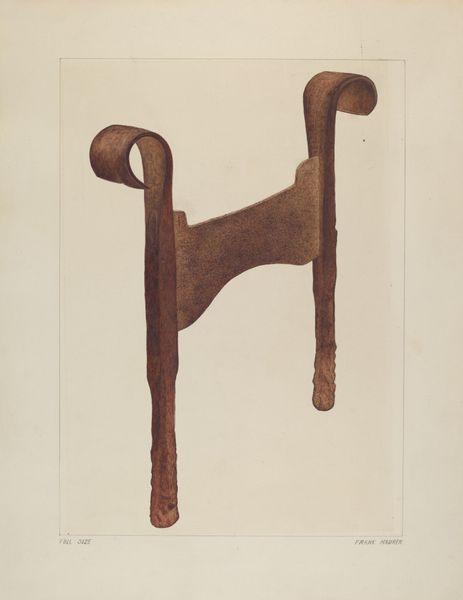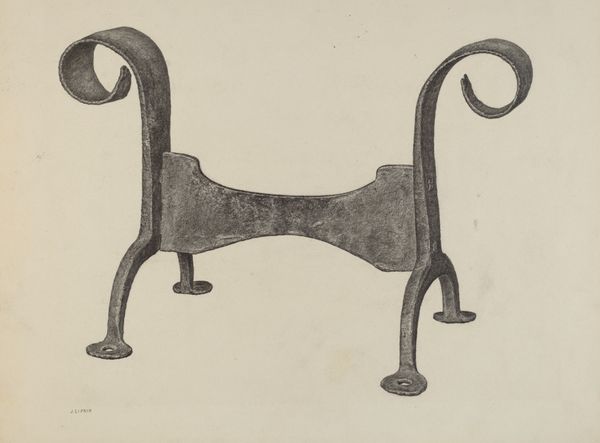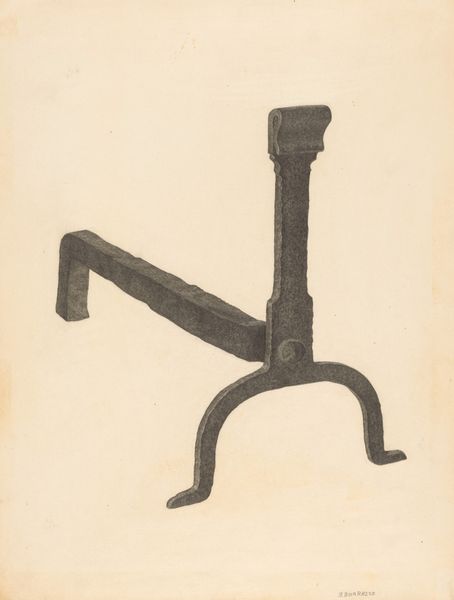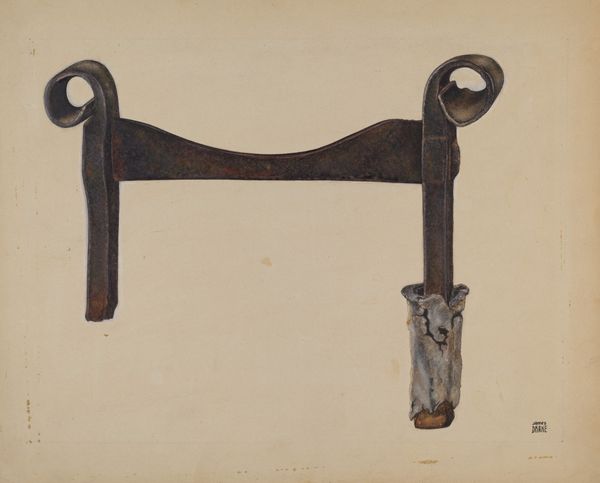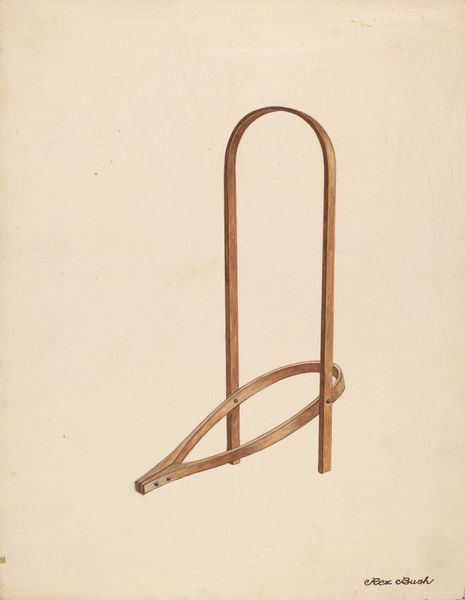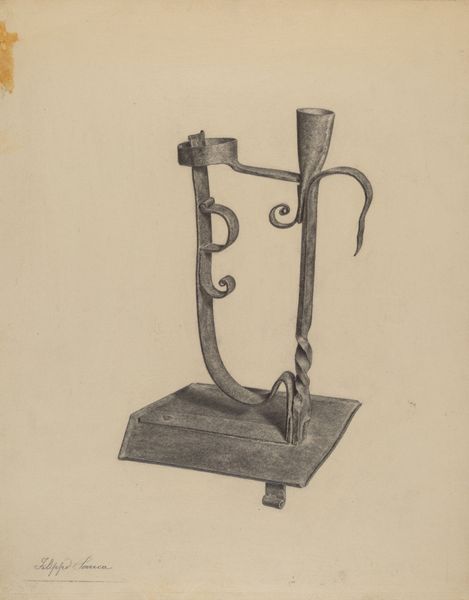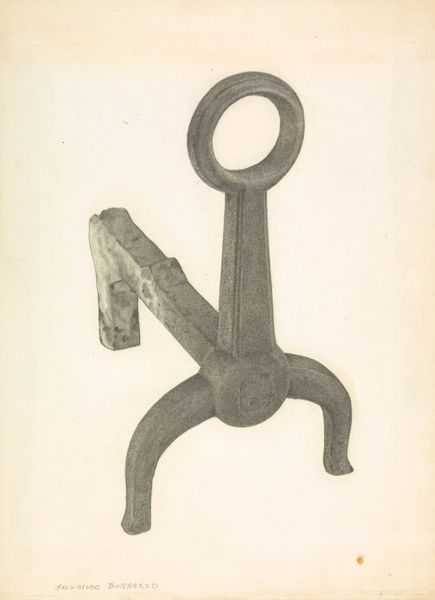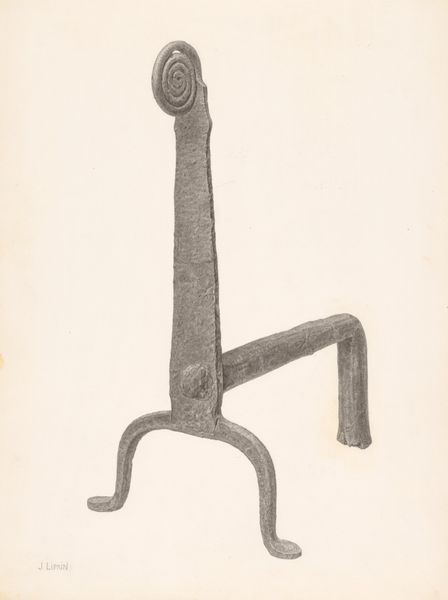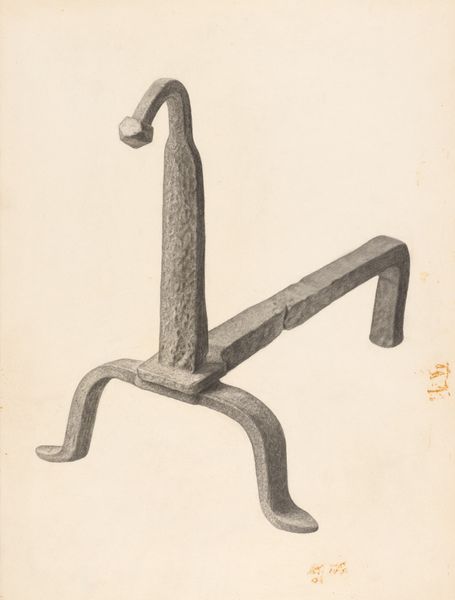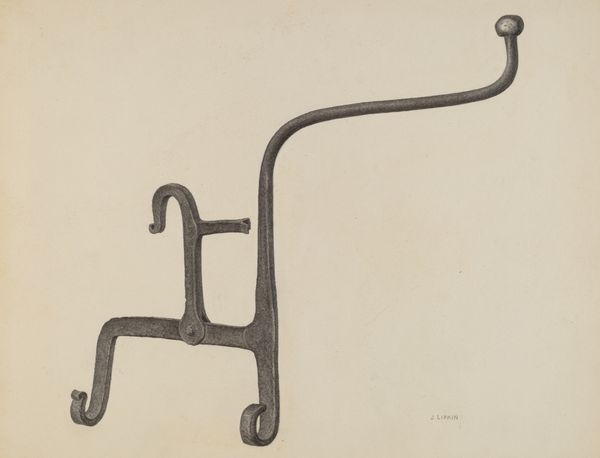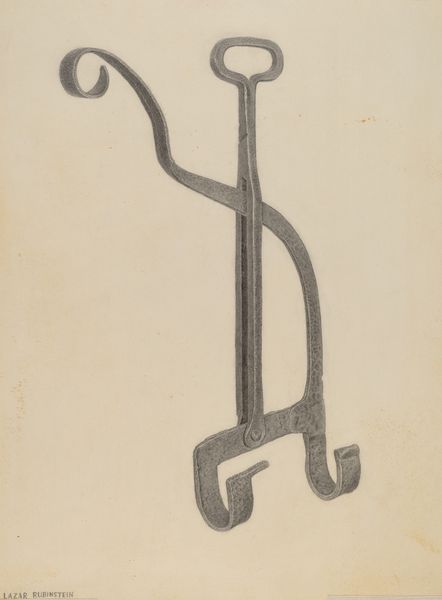
drawing, pencil, graphite
#
pencil drawn
#
drawing
#
aged paper
#
toned paper
#
light pencil work
#
pencil sketch
#
old engraving style
#
personal sketchbook
#
geometric
#
pencil
#
graphite
#
sketchbook drawing
#
pencil work
#
sketchbook art
Dimensions: overall: 28.8 x 22.6 cm (11 5/16 x 8 7/8 in.)
Copyright: National Gallery of Art: CC0 1.0
Editor: This is a graphite drawing titled "Foot Scraper" from around 1937 by Holger Hansen. It looks like a page from a sketchbook, and the object itself is depicted with such stark geometry that I’m curious about how we might read it today. What are your thoughts on it? Curator: Well, structurally, we see a tension between the industrial object represented and the artist's deliberate mark-making. Notice the strategic use of light and shadow to articulate form, almost flattening in areas, and the precision employed to render this everyday object into an abstract form. How does the composition itself speak to you? Editor: The symmetry is really striking. The vertical elements mirrored, anchored by the horizontal bar… there's a stillness, almost a monumentality to something so mundane. Does this elevation through form change our understanding of the scraper? Curator: Precisely! The artist transforms utility into something approaching the aesthetic, urging us to consider line, shape, and value independent of the object’s function. Look closely at the aged paper; the toning isn’t incidental; it’s an integral element adding depth. Editor: It makes the piece feel…complete. Almost like the material's aging adds a kind of narrative. Thank you for highlighting that! It's pushed me to consider how seemingly ordinary elements of line and material can dramatically alter an artwork's reception. Curator: My pleasure. It is in examining these relationships that we unlock a deeper appreciation for the artistic vision.
Comments
No comments
Be the first to comment and join the conversation on the ultimate creative platform.
